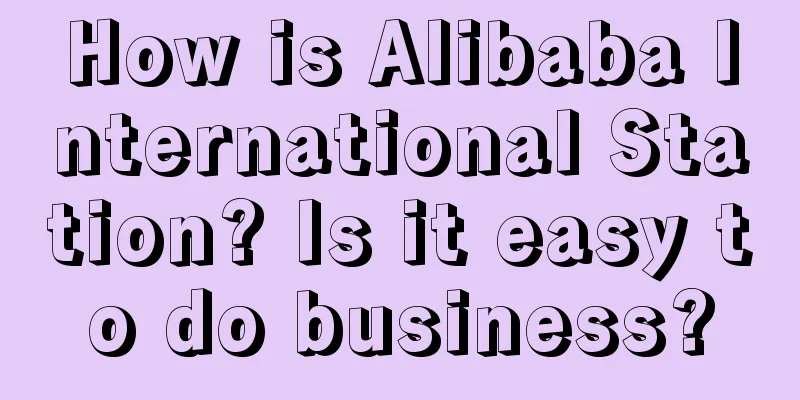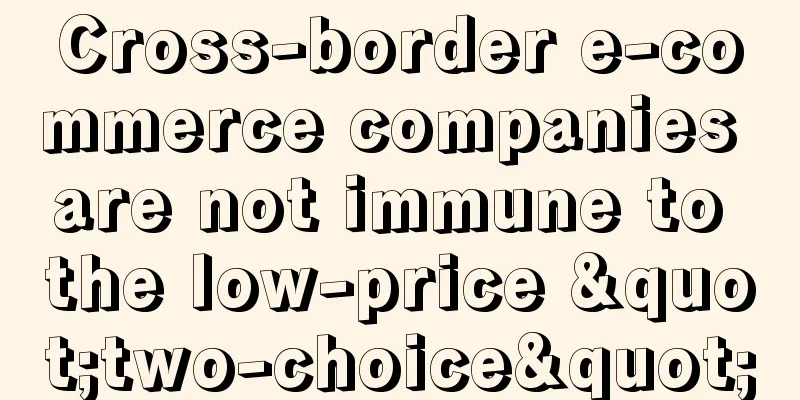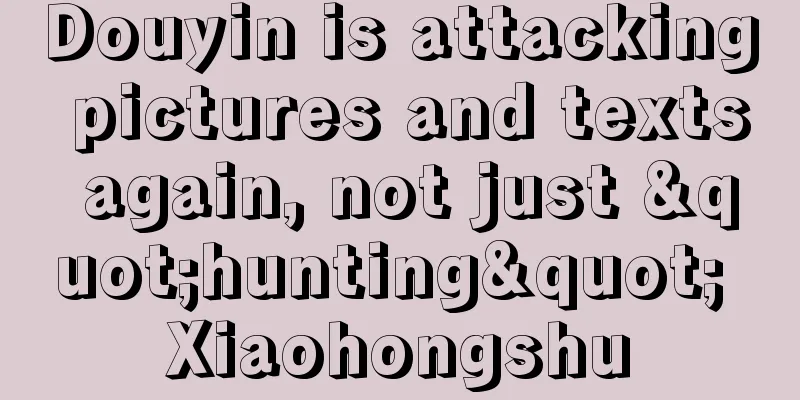Building a UGC content ecosystem from 0 to 1

Recently, a friend who is engaged in overseas study business wanted to build a UGC community. The reason was simple. He found that users left after one transaction. He wanted to extend the user life cycle through the UGC community and try to dig out some high-quality content to attract more people to participate. Ideals are full, but reality is skinny. Two months after the product was launched, we found that there were very few users who interacted with it, and the content quality did not meet expectations, so let’s talk about how to build a UGC content ecosystem from 0 to 1. 01 Overview of UGC content ecologyThe UGC content ecosystem has three key elements: production, understanding, and distribution. Behind production are people, which involves people's motivation and ability. Let's talk about the characteristics of these three elements: Let's talk about production first: Compared with the certainty of PGC content production, UGC content production is uncertain, winning by quantity, and the content quality is not high. (If you want to produce content in a targeted way, the process will be very long, and the quality will be average). Let’s talk about understanding: content understanding will label the thousands of pieces of content produced and be applied by algorithms. Finally, each distribution scenario filters the large content pool according to its own needs. 02 Content-ProductionIn the early stage of the platform, it relies on guiding UGC to produce content. In the middle and late stages, it taps into potential users and drives their growth into PUGC/PGC. 1. Talk about the characteristics of UGC productionUGC has a relatively low threshold, a large number of producers, a large amount of content, and is generally settled in "batch", so there is a lot of content and the quality is average. The threshold for PUGC/PGC is high, and the content produced will generally be manually reviewed. Quality content will be settled “by item”, so the content is relatively small and accurate. Therefore, in order to stabilize production, we transitioned from UGC production to PUGC/PGC production. 2. Talk about the UGC production mechanismSince UGC production capacity is in the middle and lower reaches, we cannot use the PGC content-oriented approach to require UGC to produce high-quality content. Under this condition, the production rules will be relatively loose, and then the content will be settled in batches. For example, if the platform wants to create "learning sharing" content, you can describe the difficulties you encountered in learning or the solutions to classic cases, etc. It must be accompanied by a picture and at least 20 words. The review of UGC content will only check whether it meets the 20-word requirement and whether it is accompanied by a picture. As for whether the post is about learning difficulties, the platform will not review it (because the input-output ratio is very low), so UGC content can only be "roughly in line with the requirements." Note: Platform settlements are generally conducted through machine review (kicking out unqualified content or screening out suitable content), or using user voting data (likes, comments) for reference and settlement. In summary, in the early stage of the platform, there was no PUGC/PGC, so it had to face UGC operation (more like traffic operation), which needed to be driven by rules. For long-term development, potential users should be tapped from UGC, and driven to grow into PUGC/PGC, and a new mechanism should be built around people. 03 Content-UnderstandingAlgorithm-based distribution generally needs to solve matching and quality issues. Content understanding mainly solves these two aspects. Matching , content understanding is to label the content, and ultimately complete the matching of people and content through algorithms. There are generally two ways to determine quality . One is that the review team will rate the quality of the content while labeling it. The other is to put the content into a "real-life" test, that is, to push it to a certain group of people first, and then judge whether it is high quality based on the feedback from these people. The former will lead to a problem, that is, the reviewers decide what is high-quality content, while the latter allows users to decide. Therefore, at present, the platform only solves the matching problem in the content understanding stage. 04 Content-DistributionDistribution is to link the user's main scene, "select" appropriate content from a large number of UGC contents, and combine them to build a scene to deliver user value. 1. Identify what value you provide to whomFor example, the value for browsing users, delivering tone, personalized distribution, or displaying hot spots, etc. Or the value for producers, production scheduling. For example, the question recommendations under Zhihu's creative inspiration tell producers what content they can produce. 2. Design rules for “screening” contentThe screening rules come from two aspects of data. One is to look at the content and understand the tags, mainly to see whether they match. The other is to judge whether the content under the tag is high-quality content, generally using user foot voting data (post-hoc indicators), such as browsing time, interaction data, etc. For example: the platform needs to build a game strategy scenario. First, it filters the strategy content by tags, then conducts a round of screening based on user interaction data, and finally selects the content that complies with the rules and is relatively the best. The above method is based on what is produced, and then we select and aggregate in the distribution scenario. However, there may be a situation where there is no matching content in the construction scenario, or the quality is not high. What should we do? At this time, we need to have a direction to guide. In terms of production, we need to lead the production of relevant content, complete the process of creating content from nothing to something, from low quality to high quality, and use common means to guide topics; in terms of user motivation (which will be discussed below), we need to provide incentives for traffic or profit sharing; in terms of content understanding, we need to identify the content. In this way, several links can be coordinated. Therefore, content distribution, in addition to "selecting" existing content, also has to take on the role of content guidance and initiation. 05 People-Motivation+AbilityBehind the content are people, and people involve ability and motivation. Ability has been discussed in previous articles, so I will not repeat it here. I will focus on motivation. There are two common pitfalls in motivation: one is whether the point of motivation is consistent with the expected result, and the other is whether you want to motivate one behavior or multiple behaviors. 1. Let’s talk about whether the incentives are consistent with the expected results.For example, a classmate wants to produce high-quality content. The external rule is to settle according to the amount of content. The larger the amount, the richer the incentive. It is conceivable that such a rule can only allow incentives to flow to users who produce watered-down content and in large quantities. Obviously, the result was inconsistent with his expectation. At this time, he discovered the problem and began to iterate the strategy, defining quality through user interaction data, and incentives began to flow towards content with good interactive effects. 2. Let’s talk about the question of incentivizing one behavior or multiple behaviorsLet’s take the above example again. After operating for a period of time, he found that many people started to move content or use machines to drive interaction in order to have more interactive content. Of course, there were also people who produced high-quality content. Obviously, counting according to the interactive content was no longer enough, so this classmate carried out a second upgrade. In order to clearly distinguish between rewards and punishments, the rules can cover multiple behaviors, and each behavior can be replaced with a currency, such as points. Incentive behaviors are rewarded with points, and disapproval behaviors are rewarded with points. Finally, they are ranked according to the points, and the effect is significant after going online. In addition, motivation must not only be guaranteed for those who are directly affected, but also for every role in the chain. For example, in the matter of content, generally in Weibo super topics and Tieba, the operation strategy will cover the opinion leaders/bar owners in the circle, but don't neglect to give motivation to producers. Power is the weather vane of ecology, so it must be established appropriately. 06 SedimentationIn addition to telling friends about the UGC production process and bringing about data changes, it is more important to precipitate some replicable things, such as: capabilities, people, and environment.
This is also the main wealth of the platform. Imagine if we have a full understanding of the ecological environment, have the ability to reuse it, and have people who can participate, then let everything happen naturally. 07 LastI would also like to remind my friends that the UGC ecosystem will encounter some bottlenecks, such as average content quality and insensitivity to hot content. Therefore, even if the operator guides hot content, the response effect will not be faster than that of platforms such as Weibo and Douyin. Scale is one aspect, but it is more determined by the product form. Because UGC ecological content distribution is based on the principle of universal benefit, its response speed is indeed much slower than that of centralized distribution products. Therefore, my final suggestion to my friends is to first understand the impact of the UGC product form, know what it can and cannot do, and also understand the logic from production, understanding, to distribution. More importantly, the capabilities accumulated from it can be reused. Author: Yangy WeChat public account: Yang Xuejie talks about operations (ID: Yangy_Baby123) |
Recommend
Not only love, this month the brand is also talking about freedom and distance
February is the first full working month after the...
How do Shopee buyers modify their reviews? Will they default to positive reviews?
After a Shopee buyer buys something in a store, if...
Can Amazon merchants get loans? What are the requirements for Amazon loans?
On Amazon, a huge e-commerce platform, sellers nee...
What should I do after shein is approved? What is the fee for settlement?
With the booming development of cross-border e-com...
Video Account: An optional or mandatory option for creators?
The development of Tencent's video account has...
Amazon Germany adds click-and-collect service
Recently, Amazon Germany launched a "click &a...
Why has coriander become the “traffic king” in brand marketing?
Is coriander the favorite of brands in developing ...
Five steps to do an excellent data analysis project
In the field of data analysis, how to design and e...
Is Amazon Global Selling Reliable? What Are the Pros and Cons?
Whether you can make money by opening a store on A...
McDonald’s collapsed, can Chinese burgers take over?
Explore the McDonald's food safety incident, a...
The number of views exceeded 5 billion, and "Southern Little Potato" was crowded in Harbin
When the number of short video views exceeded 5 bi...
Luckin Coffee and Kudi, hovering around 9.9
This article analyzes the low-price strategy of th...
How to sell products on cross-border e-commerce platforms? How to choose categories?
With the development of globalization and digitali...
eBay Germany Buyer Protection Policy Update
eBay Germany announced that from December 12, 2023...
Customer experience: Pinduoduo “only refunds” and is playing a high-end game theory game!
When implementing a "refund only" policy...









